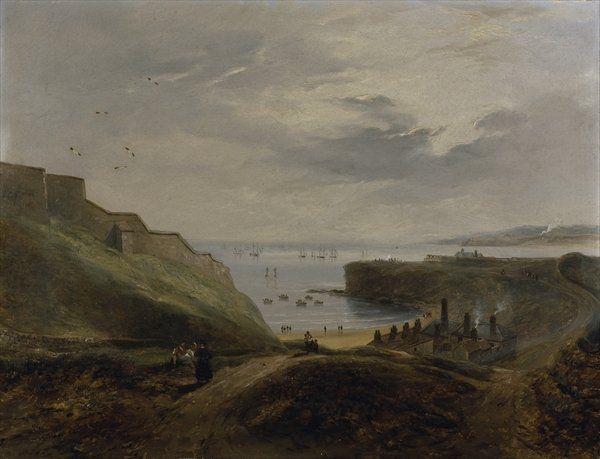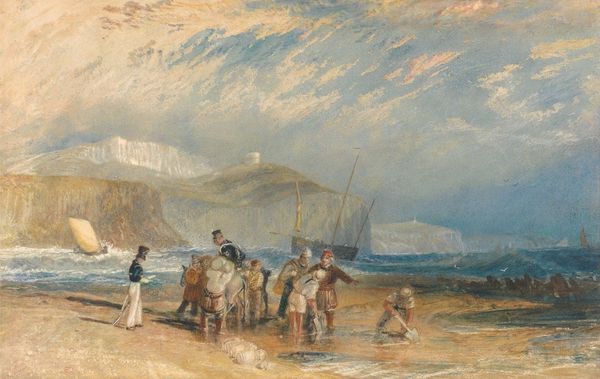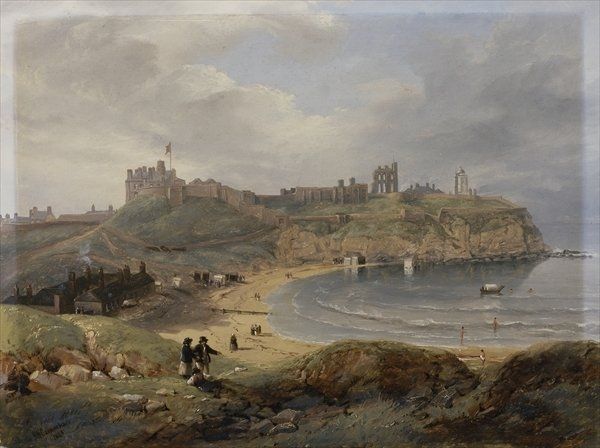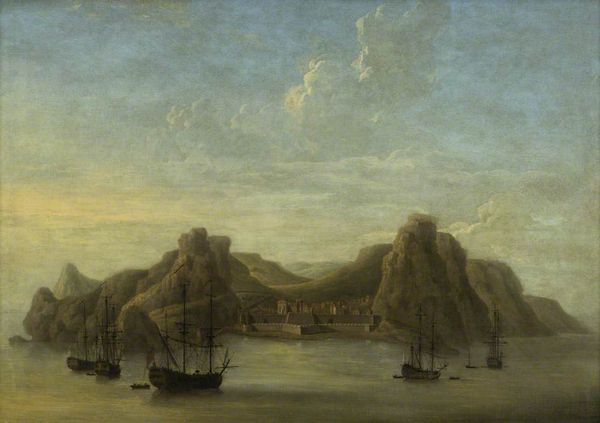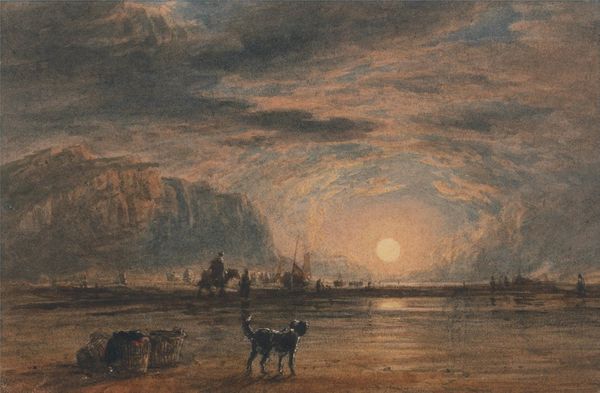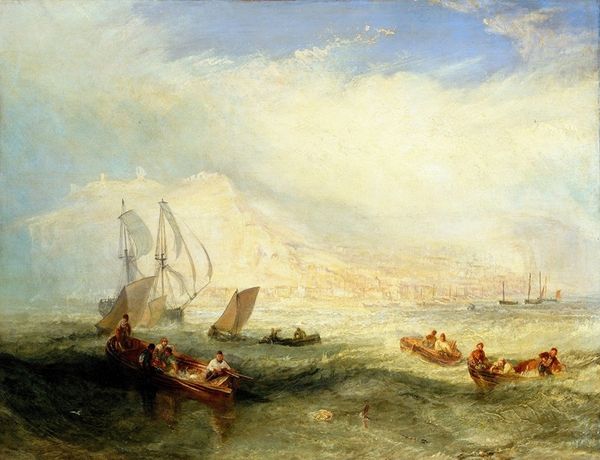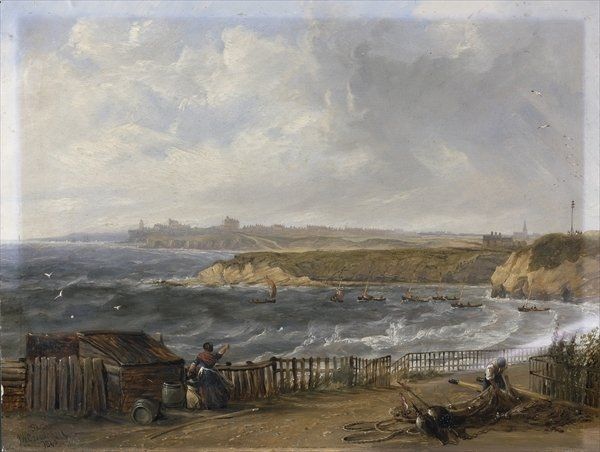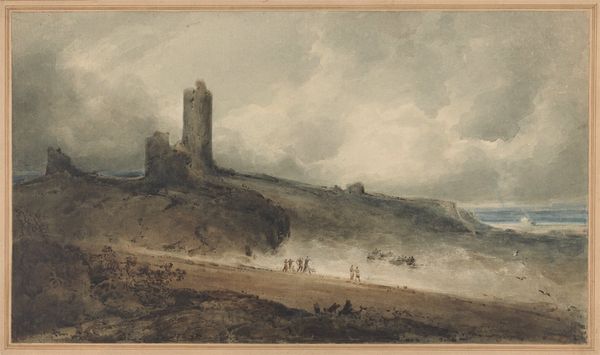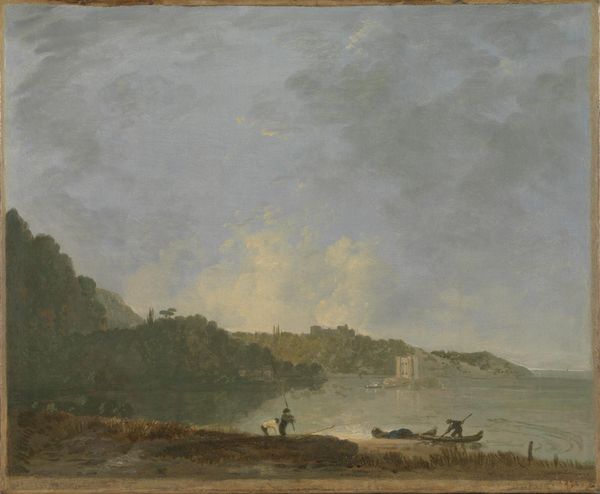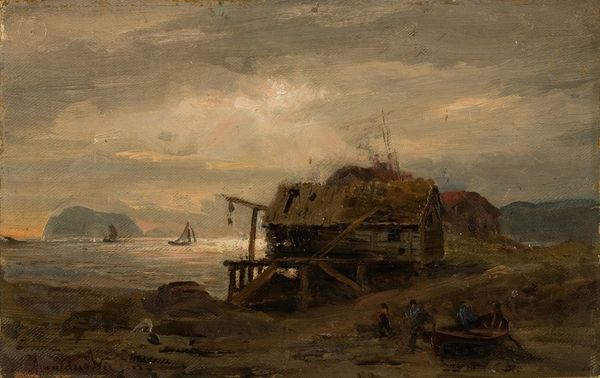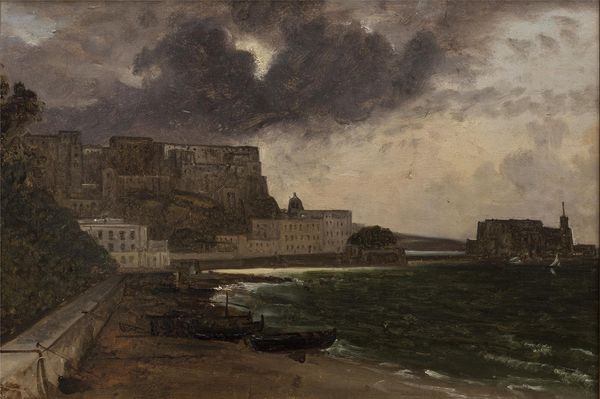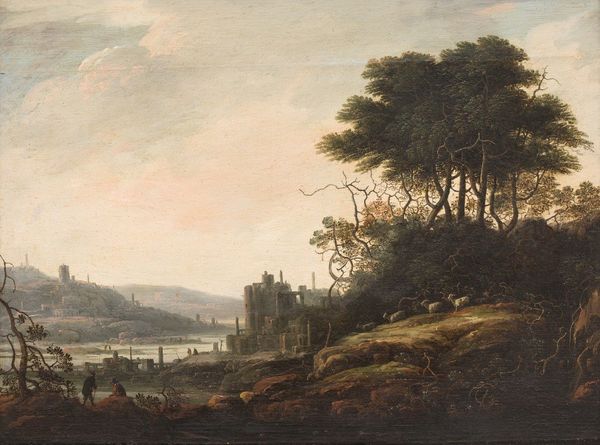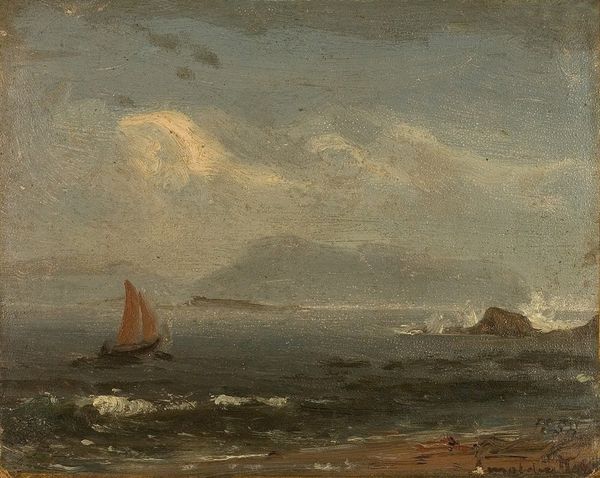
painting, oil-paint
#
painting
#
oil-paint
#
landscape
#
figuration
#
oil painting
#
romanticism
#
genre-painting
Copyright: Public Domain: Artvee
Curator: This painting, known as "Beach Scene," is attributed to John Sell Cotman. It appears to be rendered in oil paint and offers a glimpse into a moment by the shore. Editor: It feels heavy, almost burdened. The ochre sky pressing down on that beached vessel... Is that a castle ruin looming in the distance? It certainly evokes a sense of melancholy. Curator: Indeed, that muted palette, the prominent figures engaged in what appears to be labor by the boat… One can’t help but wonder about the materiality of the piece itself. Consider the impasto—how thickly the oil paint might have been applied. Did Cotman build up layers to create that textured sky and emphasize the grounded weight of the people working? What was the cost of paint at the time? These elements all speak to his artistic process, and the labor involved. Editor: From a historical perspective, this resonates with the Romanticism of the era. The vastness of nature, dwarfing humanity... And notice how the composition draws the eye, creating this narrative pull from those smaller figures on the beach all the way towards that distant ruin on the cliff. There's this dialogue happening, not just about work, but about larger societal structures maybe starting to erode, mirrored by those eroding cliffside remains. What was the socio-political mood? Were ideas of national identity, linked to the seaside and coastline, beginning to emerge at the time of production? Curator: Precisely! Cotman might be seen as elevating genre-painting through close study of real work, giving visual form to previously overlooked lives. Look at the treatment of light reflecting from the figures to suggest dynamism despite the difficult situation, perhaps mirroring the industrial growth occurring further inland at the time and highlighting the difference in pace for coastal workers. Editor: I'm particularly drawn to the contrast in the lower left foreground, these barely visible marks are a quiet suggestion that those at the bottom struggle the most. This invites questions about access to the art world then—who saw works like this, what narratives were accepted and by whom. I also think it's a challenge to how seascapes, even those showing working persons, had and have historically been framed by galleries, art historians and the public alike. Curator: It encourages a more empathetic understanding of how maritime economies worked in that era and its links to landscape and class. Editor: A contemplative look at both human endeavour and landscape, challenging us to look beyond aesthetic beauty.
Comments
No comments
Be the first to comment and join the conversation on the ultimate creative platform.
